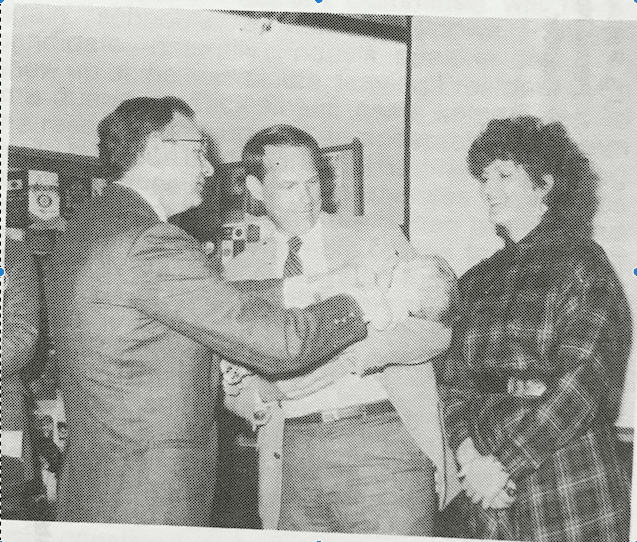* Reported by Bob Bradfield
Polio was a tragedy and a concern for millions of people, particularly after President Franklin D. Roosevelt fell victim to the disease.
In the 1940s and 50s, the March of Dimes literally collected dimes to eradicate polio, many of them donated by schoolchildren. It was by no means the multimillion-dollar operation it is today. Rotary took a leading role in helping out.
Bob Bradfield wrote that in those days the annual drive took place in February, the dead of winter. “Collection tables were set up along Pearl Street; the location we remember best was on the sidewalk at the corner of Broadway and Pearl, outside the old First National Bank building.” Boulder Rotary manned a table for two-hour periods. The table, distinctly homemade in appearance, was perhaps 2 feet by 8 feet. The top was grooved to receive dimes, spaced out about one to the inch. The take was not great.
“On one memorable February day as we manned the table,” he wrote, “we watched as a thermometer struggled upward to 13 below zero, only to turn back on a downward course. Rotarians were a hardy breed!”
Rotary also took part in seeing that children and others were immunized against polio. The photo you see shows Norris and Terri Hermsmeyer in 1987 with their son, Michael, being given polio vaccine by Dr. Dick Bedell.
In 1988, Rotary International mobilized to fight polio. A Daily Camera story noted that 23,000 Rotary clubs “have pledged to raise $120 million by 1989 to immunize 300 million children through oral vaccinations. Local Rotary clubs have pledged to raise $100,000, enough to vaccinate more than 800,000 children. Rotary clubs of Boulder placed canisters marked Polio Plus at 75 area businesses and 60 restaurants.”
To date RI has contributed more than $1.7 billion, including matching funds from the Gates Foundation, and countless volunteer hours to protect more than 2.5 billion children in 122 countries from polio.


Recent Comments